~ Hall of Heroes ~Col. Donald Blakeslee
Story from this website...and this one.
More here. |
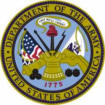  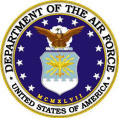 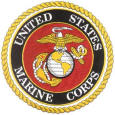  |
New York Times, October 3, 2008
By Dennis Hevesi
Col. Donald Blakeslee, one of the most decorated fighter pilots of World War II and the commander of the first American fighter squadrons to reach Berlin as the Allies ground down the German Luftwaffe, died Sept. 3 at his home in Miami. He was 90.
The cause was heart failure, said his daughter and only immediate survivor, Dawn Blakeslee. Ms. Blakeslee said she did not announce her father’s death last month because of his reluctance to talk about his achievements.
As commander of the Fourth Fighter Group of the Eighth Fighter Command, Colonel Blakeslee led three squadrons of 16 single-seat, single-engine P-51 Mustangs, each equipped with six machine guns mounted in the wings and sighted so that the bullet streams could converge on the Messerschmitts and Focke-Wulf fighters that were trying to down Allied bombers.
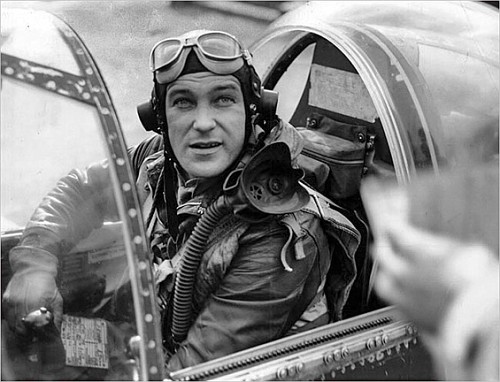 By war’s end, the Fourth Fighter Group was credited with destroying 1,020 German aircraft, 550 shot out of the air and 470 hit while on the ground. That total surpassed the 992 German planes taken out by the 56th Fighter Group, led by another fighter ace, Col. Hubert Zemke. By war’s end, the Fourth Fighter Group was credited with destroying 1,020 German aircraft, 550 shot out of the air and 470 hit while on the ground. That total surpassed the 992 German planes taken out by the 56th Fighter Group, led by another fighter ace, Col. Hubert Zemke.
Walter J. Boyne, a former director of the National Air and Space Museum at the Smithsonian Institution, said on Tuesday that Colonel Blakeslee was one of the cadre of commanders who “blunted the edge of the Luftwaffe” and “went on to lead the progressive destruction of the German air force.”
In his four years in the European theater, Colonel Blakeslee flew nearly 500 missions and had about 1,000 combat hours to his credit, believed to be more missions and hours “than any other American fighter pilot of World War II,” said Barrett Tillman, a former executive secretary of the American Fighter Aces Association.
On March 6, 1944, Colonel Blakeslee’s fighter group became the first to fly above the fleet of Boeing B-17s and Consolidated B-24s as they each dropped up to 4,000 pounds of bombs on Berlin. As German fighters tried to intercept the bombers, Colonel Blakeslee’s planes swooped down.
Of the aerial combat, the colonel later told reporters: “There’s nothing unusual in the missions. They all follow the same pattern. Either you get on Jerry’s tail or he gets on yours. That’s all.”
“We got low enough to see Berlin only once,” he said. “We were down to around 10,000 feet and we could see that blocks and blocks of Berlin had been bombed absolutely flat.”
On April 8, 1944, the Fourth Fighter Group set a record for the European theater, shooting down 31 planes in one day. Then, in late June, Colonel Blakeslee led his fighters on one of their most arduous missions, escorting shuttle-bombers to Russia.
“When the war had progressed to a certain point where American bombers had the range to over-fly German-held territory,” Mr. Boyne said, “the idea was to land them in the Soviet Union, then return and bomb on the way back. You double the utilization of your bombers.”
“This required, particularly on the part of the fighters,” Mr. Boyne continued, “great endurance and navigation abilities. It strained the plane and strained the pilot.”
In a ceremony in England on March 6, 1944, Gen. Dwight D. Eisenhower, the supreme commander of Allied forces in Europe, awarded the Distinguished Service Cross to Colonel Blakeslee. Beside the colonel was Capt. Don Gentile, a member of his flight group, who was receiving the same decoration, for destroying 30 German planes.
In all, according to Mr. Tillman of the fighter aces association, Colonel Blakeslee received two Distinguished Service Crosses, seven Distinguished Flying Crosses, two Silver Stars, six Air Medals and the British Distinguished Flying Cross. A decade later, for his Korean War service, he received the Legion of Merit, another Distinguished Flying Cross and four Air Medals.
Donald James Mathew Blakeslee was born on Sept. 11, 1917, in Fairport Harbor, Ohio. As a child, he became fascinated with planes while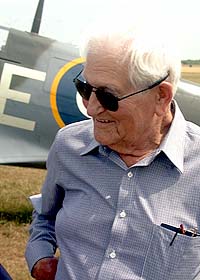 watching the Cleveland National Air Races. In the mid-1930s, he and a friend bought a Piper Cub. In 1940, after his friend crashed the plane, Mr. Blakeslee went to Canada to join the Royal Canadian Air Force. watching the Cleveland National Air Races. In the mid-1930s, he and a friend bought a Piper Cub. In 1940, after his friend crashed the plane, Mr. Blakeslee went to Canada to join the Royal Canadian Air Force.
After pilot training, he was sent to Britain, where he flew combat missions for the Royal Air Force, mostly with American Eagle squadrons composed of American volunteers. In September 1942, he was transferred to the United States Army Air Forces and assigned to the Fourth Fighter Group. He became group commander in January 1944. That year, the colonel married Leola Fryer; she died in 2003. He retired from the Air Force in 1965.
Colonel Blakeslee was a taciturn man with a no-nonsense presence that commanded respect from his fighters. A New York Times article described how, on Sept. 11, 1944, he was “ill at ease” in front of photographers and reporters while being interviewed about his exploits.
“It’s more fun facing a squadron of Jerries,” he said. |
After retiring, Blakeslee lived in Miami, Florida. Blakeslee married Leola Fryer (died in 2005) in 1944 and had one daughter. Blakeslee died on September 3, 2008 at his home due to heart failure.
On Friday 18 September 2009, Colonel Don Blakeslee and his wife's ashes were interred at Arlington National Cemetery. The ceremony took place at 1100 and was open to the public. The 4th Fighter Wing did a flyover at the ceremony.
Thank you sir, for your service and sacrifice for our country!
|
|
Please remember the Canteen is here to honor, support and entertain our troops and their families. This is a politics-free zone! Thanks for helping us in our mission!
|
|



![]()










![]()
![]()
![]()
![]()
![]()
![]()
![]()
![]()
![]()
![]()
![]()
![]()
![]()
![]()
![]()





